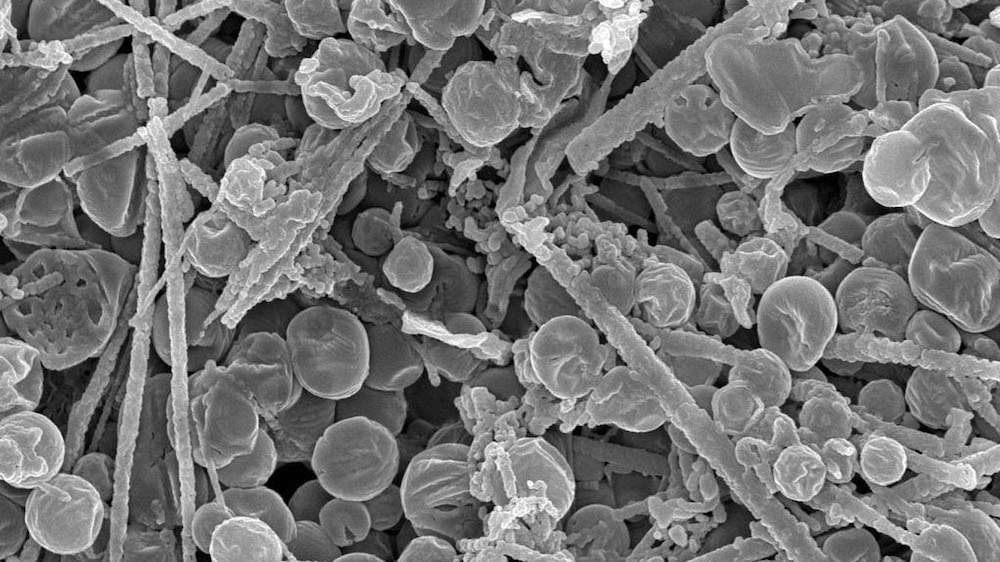Create a free profile to get unlimited access to exclusive videos, sweepstakes, and more!
Could things that look like fossils trick us into thinking there was once life on Mars?
If you want to believe, fake Martian fossils might convince you (but they're just rock formations).

If you see things about fossilized Martian microbes floating around on the internet, those supposed alien micro-creatures are not what they seem. They’re posers.
Some formations can be easy to mistake for extraterrestrial life, especially on a planet that might have once been like Earth, where fossils of things that were once alive might be hiding. What will we find when the samples Perseverance is digging up right now finally land on Earth? Astrobiologists might run into more dead ends than dead organisms. There are chemical processes that can make something that never actually lived appear otherwise.
Because organics are involved in the chemical processes that create these imposters, and organics are necessary for life (at least as we know it), there needs to be a way to tell them apart from actual fossils. Some look like bona fide microbes. This is why researchers Sean McMahon and Julie Cosmidis of the University of Edinburgh coauthored a study, recently published in Journal of the Geological Society, about what can give the fakes away.
“Many processes involving self-organization during chemical interactions between minerals, fluids, and/or carbon-rich compounds could create false fossils,” McMahon told SYFY WIRE. “Examples include things like chemical gardens and the tendency of certain carbon compounds to form spheres and tubes.”
Those spheres and tubes look eerily like bacteria under a microscope. Mars aside, many have already been found on Earth. While the presence of organics is necessary for life (again, as we know it), it doesn’t necessarily mean there is or ever was life there. There are probably more processes that create pseudofossils that are still unknown. Even more confusing is that many of those that are known on our planet occurred where there was organic matter and liquid water, kind of like the primordial soup Earth was before the first life appeared billions of years ago.
McMahon and Cosmidis reviewed all existing evidence of fake fossils and what can make them look so much like mysterious forms of life. They covered both Earth and Mars, since rovers have unearthed specimens with an uncanny resemblance to actual microbes. Knowing what abiotic (non-biological) processes are behind deposits that cosplay as fossils will make it easier to rule out posers in the future. You might remember the entomologist who adamantly insisted one of those Martian samples contained actual alien insect remains. He really wanted to believe.
“You can look at the chemical composition and microscopic structure in detail,” McMahon said. “But the details you would want to look at are not necessarily preserved and may be lost over geological time, making the fossils hard to distinguish from pseudofossils.”
Among the formations that have been mistaken for fossils on Earth are strange textures that look like drag marks from worms; pyrite forms that appeared like jellyfish; crystals that could easily be protozoans to the untrained eye, even the trained eye; and curls of long-dried mud that look as if they could have been left behind by some sort of arthropod. Some resemble stromatolites. The infamous Eozoon canadense was rumored to be an early form of life until it was proven to be nothing more than a deposit of carbon and serpentine-rich rocks.
Martian meteorites that fell to Earth are our only source for samples from the Red Planet for now. What were initially mistaken to be fossilized worms and bacteria on those meteorites were actually made of carbonate, magnetite, and hydrocarbons. Abiotic processes are masters of disguise. They can make rocks appear to have biosignatures in the chemical and molecular sense as well as minearalologically, isotopically, and morphologically. McMahon thinks that such formations need to be recreated in a lab in every way possible to avoid false positives.
“We need to do more experiments to produce the impostors in the lab, using Mars-like conditions,” he said. “Then we can study these products in detail and look for identifying features, just as we have been doing with real biosignatures — we need to find the differences."


























